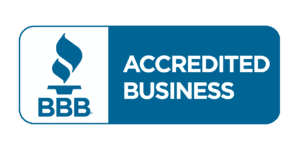Search Engine Optimization (SEO) has become a buzzword in the digital marketing landscape, and for a good reason. It’s a powerful tool that can catapult your website to the top of search engine results pages (SERPs), bringing increased visibility, organic traffic, and potential customers. Implementing an effective SEO strategy, however, isn’t as straightforward as it might seem. It involves a combination of various components that work together to improve your site’s ranking.
But how exactly do you create and implement an effective SEO strategy? How long does it take to start showing results? And how long will it take to rank highly on search engines? Let’s delve into these questions in this comprehensive guide.
The Essential Components of an Effective SEO Strategy
An effective SEO strategy isn’t a one-size-fits-all solution. It’s a multifaceted approach that requires careful planning and execution. Here are the key components:
1. Keyword Research: The Foundation of SEO
Keyword research is the cornerstone of any successful SEO strategy. It involves identifying the terms, phrases, and questions your potential customers are using when they’re searching for products or services similar to yours. By understanding these keywords, you can tailor your content to align with what your audience is looking for, enhancing your visibility on SERPs.
Several tools, including Google Keyword Planner, SEMRush, and Ahrefs, can help you identify relevant keywords. These tools provide data on keyword volume (how many people are searching for a particular term), competition (how many other websites are ranking for the term), and relevancy to your business.
2. On-Page SEO: Fine-Tuning Your Website
On-page SEO involves optimizing the content and HTML source code of individual webpages to make them more attractive to search engines and users. Key elements of on-page SEO include:
- Title tags: These are HTML elements that specify the titles of web pages. They should be descriptive, include your target keywords, and be under 60 characters to display correctly on SERPs.
- Meta descriptions: These are brief summaries of a webpage’s content. They should be compelling, include your target keywords, and be under 160 characters to fully display on SERPs.
- Headers: Headers structure your content and make it easy for both users and search engines to understand. They should include your target keywords where relevant.
- URL structure: URLs should be straightforward and readable, with no unnecessary characters or words. Including your target keywords in the URL can also help improve your SEO.
- Keyword usage: Your target keywords should feature prominently throughout your content. However, avoid keyword stuffing as this can harm your SEO. Instead, aim for a natural inclusion of keywords in your content.
3. Off-Page SEO: Building Your Online Reputation
Off-page SEO refers to activities you undertake outside your website to enhance its ranking on SERPs. Key elements of off-page SEO include:
- Backlink building: Backlinks, or inbound links, are links from other websites to yours. They’re essential because search engines see them as votes of confidence in your content. You can build backlinks through guest posting, partnerships, or creating high-quality, shareable content.
- Social bookmarking: This involves submitting your content to social bookmarking sites like Reddit, Digg, or StumbleUpon, which can help increase your online exposure.
- Social media marketing: While social media signals aren’t a direct ranking factor, a strong social media presence can boost your SEO indirectly. For example, the more your content is shared on social media, the more likely it is to earn backlinks.
4. Content Marketing: The Heart of SEO
“Content is king” is a common mantra in the SEO world, and it’s true. High-quality, relevant content can drive traffic to your site, improve its authority and relevance, and boost your SEO ranking.
Content marketing involves creating and sharing valuable content to attract and engage your target audience. This can include blog posts, videos, podcasts, infographics, whitepapers, and more. The key is to provide value to your audience, answer their questions, and solve their problems through your content.
5. Technical SEO: Optimizing Your Website for Crawling and Indexing
Technical SEO refers to optimizing your website for the crawling and indexing phase. It’s about making sure search engines can understand, access, and index your content. Key elements of technical SEO include:
- Site speed: A slow-loading website can frustrate users and lead to high bounce rates, which can harm your SEO. You can improve your site speed by optimizing your images, enabling browser caching, reducing server response time, and more.
- Mobile-friendliness: With the majority of online searches now conducted on mobile devices, having a mobile-friendly website is crucial. Google also uses mobile-first indexing, which means it predominantly uses the mobile version of your content for indexing and ranking.
- Site architecture: A well-structured website makes it easy for users to navigate and find what they’re looking for. It also makes it easier for search engines to crawl and index your content.
- Structured data markup: This is code that you add to your website to help search engines better understand your content. It can also enhance your appearance on SERPs with rich snippets, like reviews or ratings.
6. Local SEO: Capturing Local Customers
For businesses with a physical location or those serving a specific geographic area, local SEO is crucial. It involves optimizing your website for local search results, managing online reviews and ratings, claiming local business listings, and ensuring your business’s name, address, and phone number (NAP) are consistent across the web.
7. Analytics and Reporting: Measuring Your Success
Implementing an SEO strategy without tracking and analyzing your results is like shooting in the dark. You need to understand what’s working and what isn’t, so you can adjust your strategy accordingly.
Google Analytics and Google Search Console are invaluable tools for measuring your website’s performance. They provide data on metrics like organic traffic, bounce rate, page views, conversion rates, and more. By regularly monitoring these metrics, you can gain insights into your audience’s behavior, identify opportunities for improvement, and measure the success of your SEO efforts.
How Long Does SEO Take to Start Working?
SEO is not a quick fix but rather a long-term investment. The time it takes to start seeing results from your SEO efforts depends on numerous factors, including the competitiveness of your industry, the quality of your content, the health of your website, and the strategies you’re implementing.
However, as a general rule of thumb, you can expect to start seeing initial results within 4-6 months of implementing your SEO strategy. These might be small improvements, like increased organic traffic or higher rankings for certain keywords.
Remember, SEO is an ongoing process. The most significant results usually do not start to happen until after the 6-month mark. And even then, you need to continue optimizing your website and adapting your strategy to maintain and improve your results.
How Long Does It Take to Rank Highly?
Ranking highly on SERPs is a goal for many businesses, but it’s not something that happens overnight. In fact, a study by Ahrefs found that, on average, pages that rank in the top 10 search results are almost always 2 or more years old, while those that rank at number one are almost always 3 or more years old.
This shows that it takes time, patience, and consistent effort to achieve high rankings. SEO is a marathon, not a sprint. It involves continuously optimizing your website, creating high-quality content, building backlinks, and staying up-to-date with the latest SEO trends and algorithm updates.
Conclusion
SEO is a complex, ever-evolving field that requires a strategic approach and a deep understanding of how search engines work. While it can be challenging and time-consuming, the benefits of a well-executed SEO strategy are significant.
By implementing the components outlined in this guide, tracking your results, and adjusting your strategy as needed, you can improve your visibility on SERPs, attract more organic traffic, and ultimately, grow your business. Just remember: SEO is a long-term investment, so don’t expect instant results. Instead, focus on providing value to your audience, and the results will follow.









